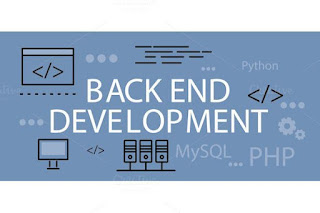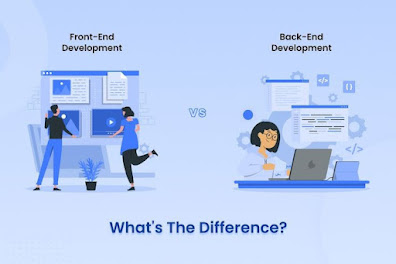Know about Back End Development
Back-end development refers to the part of web development that focuses on the server-side of web applications. Back-end developers are responsible for designing, building, and maintaining the server-side components of a web application, including the web server, application server, and database.
Some of the key skills and technologies used in back-end development include:
Programming languages: Back-end developers typically use programming languages such as Java, Python, Ruby, PHP, and Node.js to build server-side components.
Web frameworks: Back-end developers often use web frameworks such as Django, Flask, Ruby on Rails, and Express.js to simplify and streamline the development process.
Databases: Back-end developers need to be familiar with databases such as MySQL, PostgreSQL, MongoDB, and Cassandra, as they are responsible for designing and maintaining the database structure and managing data storage.
APIs: Back-end developers often build and maintain application programming interfaces (APIs) that enable communication between the server-side components of a web application and the client-side components.
Security: Back-end developers need to be familiar with security best practices to ensure that sensitive data is properly protected.
Back-end development involves the implementation of the logic and functionality that powers the front-end (the user-facing side) of a web application. The back-end is responsible for processing user input, communicating with databases, and generating responses to user requests. This includes managing server infrastructure, designing and maintaining databases, and writing server-side code.
Some of the key responsibilities of back-end developers include:
Designing and implementing server architecture: Back-end developers need to design the server infrastructure and choose the appropriate technologies to ensure that the web application can handle a large number of users, is scalable, and has high availability.
Developing APIs: Back-end developers need to create APIs that provide a standardized way for the front-end and back-end to communicate. This enables different parts of the application to work together seamlessly and allows developers to integrate third-party services.
Managing databases: Back-end developers are responsible for designing and maintaining the database structure, managing data storage, and ensuring data is properly organized, secure, and backed up.
Writing server-side code: Back-end developers write server-side code that processes user input and generates responses. This includes writing code in programming languages such as Java, Python, Ruby, PHP, and Node.js, and using web frameworks like Django, Flask, Ruby on Rails, and Express.js.
Ensuring security: Back-end developers need to ensure that the web application is secure by implementing measures such as authentication, authorization, encryption, and access control.
Back-end development involves the implementation of the logic and functionality that powers the front-end (the user-facing side) of a web application. The back-end is responsible for processing user input, communicating with databases, and generating responses to user requests. This includes managing server infrastructure, designing and maintaining databases, and writing server-side code.
Some of the key responsibilities of back-end developers include:
Designing and implementing server architecture: Back-end developers need to design the server infrastructure and choose the appropriate technologies to ensure that the web application can handle a large number of users, is scalable, and has high availability.
Developing APIs: Back-end developers need to create APIs that provide a standardized way for the front-end and back-end to communicate. This enables different parts of the application to work together seamlessly and allows developers to integrate third-party services.
Managing databases: Back-end developers are responsible for designing and maintaining the database structure, managing data storage, and ensuring data is properly organized, secure, and backed up.
Writing server-side code: Back-end developers write server-side code that processes user input and generates responses. This includes writing code in programming languages such as Java, Python, Ruby, PHP, and Node.js, and using web frameworks like Django, Flask, Ruby on Rails, and Express.js.
Ensuring security: Back-end developers need to ensure that the web application is secure by implementing measures such as authentication, authorization, encryption, and access control.
Overall, back-end development is an essential part of web development that requires a wide range of technical skills and knowledge. Back-end developers need to be familiar with server infrastructure, databases, programming languages, web frameworks, APIs, and security best practices.




Comments
Post a Comment